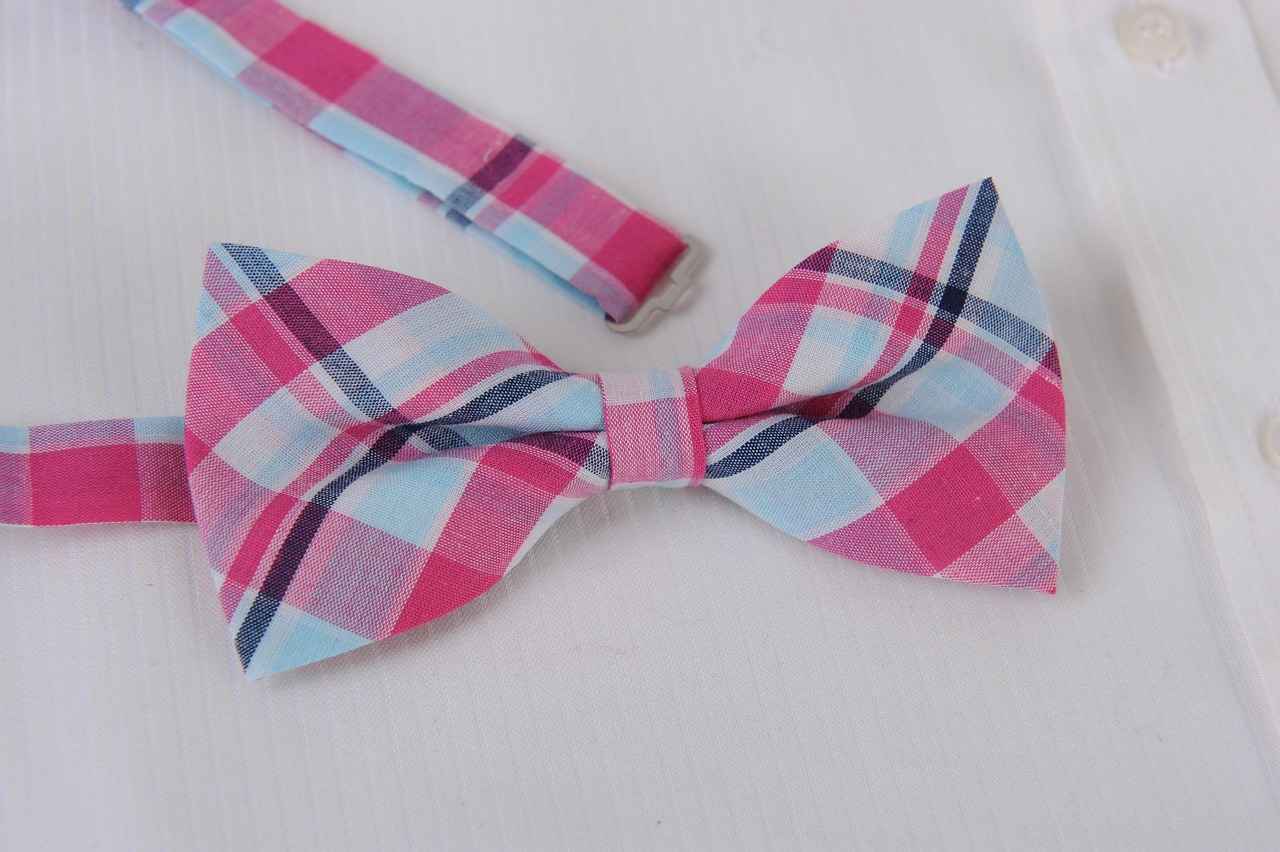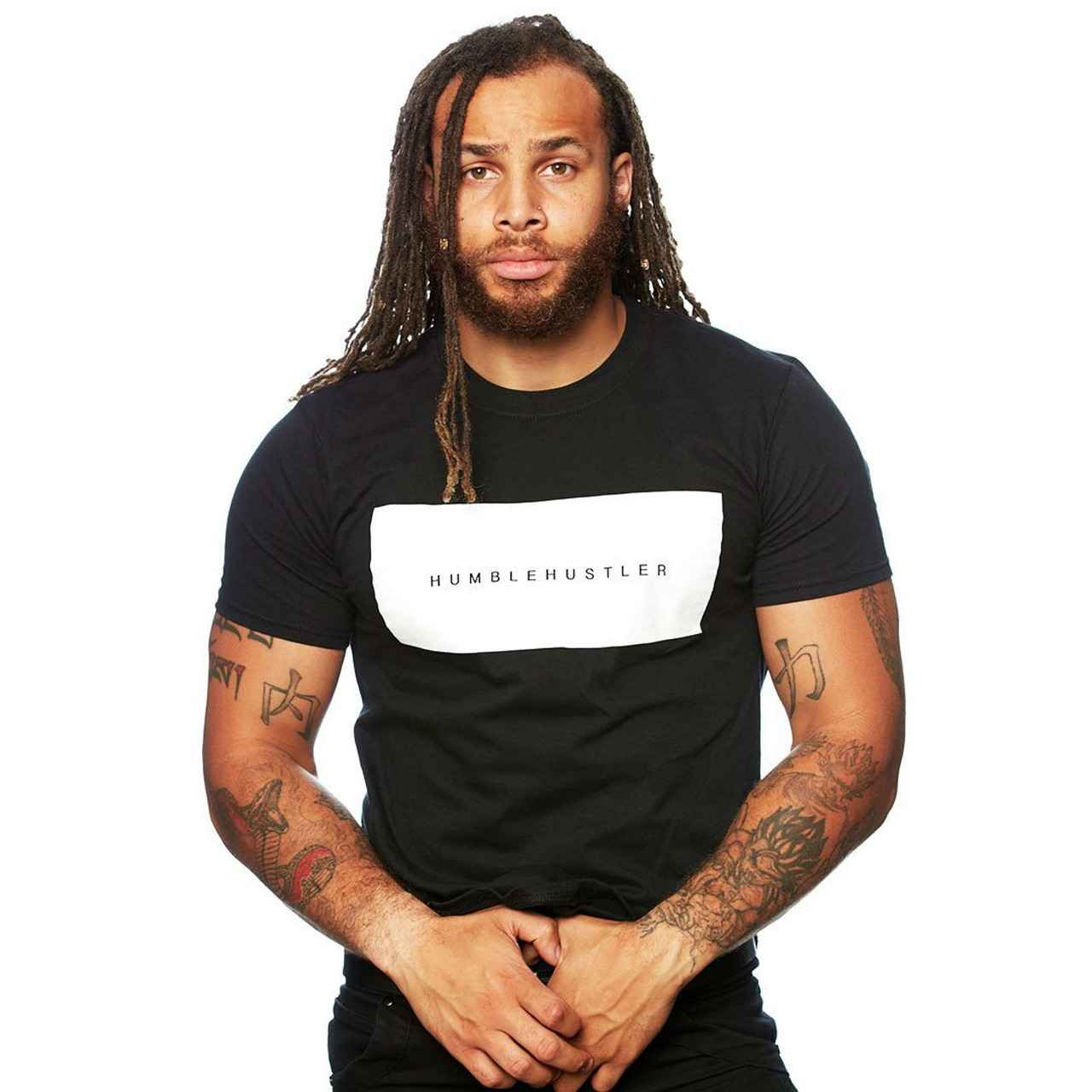This article delves into the essential elements of designing custom embroidered polo shirts. It provides insights into fabric choices, design considerations, and production processes to help you achieve the perfect look for your apparel.
Understanding Custom Embroidery
Custom embroidery is the art of stitching designs onto fabric, adding a unique touch to polo shirts. This technique not only enhances the aesthetic appeal but also offers durability. The choice of embroidery method can significantly influence the final outcome, making it essential to understand the basics.
Choosing the Right Fabric for Polo Shirts
The fabric selected for your polo shirt is crucial as it affects both the comfort and quality of the embroidery. Below are popular fabric types:
- Cotton: Known for its softness and breathability, cotton is a favored choice for casual wear.
- Polyester: Renowned for its durability and resistance to wrinkles, polyester is ideal for active use.
- Fabric Blends: Combining cotton and polyester offers the best of both worlds, enhancing functionality and appearance.
Design Considerations for Embroidered Polo Shirts
Design plays a pivotal role in the appeal of custom embroidered polo shirts. Key elements include:
- Color Selection: Choosing the right colors can enhance visibility and overall design harmony.
- Placement of Embroidery: The location of your design can greatly affect the shirt’s look; popular areas include the chest and sleeves.
Working with an Embroidery Service
Finding a reliable embroidery service is essential for achieving quality results. Look for providers with a strong portfolio and positive reviews. Clear communication of your design vision is crucial for success.
Finalizing Your Order and Production Process
Once your design is finalized, understanding the production timeline is important. Typical production times can vary based on the complexity of the design and order size. Ensure quality control measures are in place to inspect the final products before delivery.
Conclusion: Achieving the Perfect Custom Embroidered Polo Shirt
In conclusion, creating the perfect custom embroidered polo shirt requires careful consideration of fabric, design, and collaboration with a skilled embroidery service. By following these guidelines, you can achieve a stylish and personalized look that meets your needs.

Understanding Custom Embroidery
is essential for anyone looking to add a personal touch to their apparel, particularly polo shirts. This technique involves the intricate process of stitching designs directly onto fabric, elevating a simple garment into a unique piece of art. The appeal of custom embroidery lies in its ability to transform standard clothing into personalized expressions of style, identity, or branding.
At its core, custom embroidery utilizes a variety of stitching techniques to create detailed designs. Techniques such as digitizing convert artwork into a format that embroidery machines can understand, allowing for precision and consistency. Common stitches used include satin, fill, and running stitches, each contributing to the overall texture and appearance of the finished product.
The significance of custom embroidery extends beyond aesthetics. It serves as a powerful tool for branding and identity. Businesses often employ custom embroidered polo shirts as part of their uniforms, fostering a sense of belonging among employees while promoting brand visibility. Additionally, personalized embroidery can enhance the emotional value of gifts, making them more memorable and cherished.
When considering custom embroidery, it is crucial to understand the importance of quality. High-quality embroidery not only looks better but also lasts longer, withstanding frequent washing and wear. Choosing the right embroidery service is vital, as it ensures that your designs are executed with precision and care, maintaining the integrity of the original artwork.
In summary, custom embroidery is a multifaceted technique that combines artistry with functionality. Whether for personal use or business branding, understanding the basics of embroidery techniques and their significance can help you create stunning, personalized polo shirts that stand out in any setting.

Choosing the Right Fabric for Polo Shirts
is a crucial step in ensuring the quality and comfort of your custom embroidered apparel. The fabric you select not only influences the shirt’s overall appearance but also its durability and how well it holds embroidery. In this section, we will explore various fabric types commonly used for polo shirts, their unique characteristics, and how these factors can impact the final product.
| Fabric Type | Characteristics | Embroidery Quality | Comfort Level |
|---|---|---|---|
| Cotton | Soft, breathable, and natural | Excellent detail retention | High comfort |
| Polyester | Durable, wrinkle-resistant, and quick-drying | Good for vibrant colors | Moderate comfort |
| Blends | Combination of cotton and polyester | Balanced quality | High comfort with durability |
When selecting fabric, consider the intended use of the polo shirt. For instance, if the shirt is for casual wear, cotton might be the best choice due to its softness and breathability. However, for athletic purposes or work environments, polyester is often preferred for its durability and moisture-wicking properties.
Fabric blends are also gaining popularity, as they combine the best qualities of both cotton and polyester. These blends can enhance the look and functionality of the shirt, making them suitable for various occasions.
Ultimately, the fabric you choose will significantly affect the comfort and quality of the embroidery. Selecting the right fabric ensures that your custom polo shirts not only look great but also feel great to wear.
Cotton vs. Polyester
Cotton and polyester are the two most common fabrics used for polo shirts, each offering unique benefits and drawbacks that can influence your choice for custom designs. Understanding these differences is essential for making an informed decision that aligns with your needs and preferences.
Cotton is renowned for its softness and breathability, making it a popular choice for casual wear. It is a natural fiber that allows for excellent airflow, which helps keep the wearer cool and comfortable, especially in warm weather. Additionally, cotton is hypoallergenic, making it suitable for individuals with sensitive skin. However, one of the drawbacks of cotton is its tendency to wrinkle easily and its lower durability compared to synthetic fibers. Frequent washing can also lead to fading and shrinkage over time.
On the other hand, polyester is a synthetic fabric known for its durability and resistance to wrinkles and shrinking. This makes it an excellent choice for athletic and workwear polo shirts, as it can withstand rigorous use without losing its shape or appearance. Polyester also dries quickly, which is advantageous for active wearers. However, it is less breathable than cotton, which may lead to discomfort in hot conditions. Some people may also find polyester less comfortable against the skin compared to natural fibers.
When choosing between cotton and polyester for your custom polo shirts, consider the intended use and the environment in which they will be worn. If comfort and breathability are your top priorities, cotton may be the way to go. Conversely, if you need a fabric that offers durability and ease of care, polyester could be the better option.
Ultimately, the choice between cotton and polyester will depend on your specific needs and preferences. Understanding the characteristics of each fabric will help you make an informed decision that enhances both the look and functionality of your custom polo shirts.
Benefits of Cotton
Cotton is a natural fiber that has long been favored for its remarkable qualities, making it an ideal choice for embroidered polo shirts. Its softness and breathability contribute to overall comfort, ensuring that wearers feel at ease throughout the day. In this section, we will explore the numerous benefits of cotton, particularly in the context of embroidered polo shirts, and discuss its durability when subjected to washing and wear.
- Comfortable Feel: Cotton’s soft texture is gentle against the skin, making it a preferred fabric for casual and professional attire alike. This quality is especially important in embroidered polo shirts, where comfort is paramount for both daily wear and special occasions.
- Breathability: One of the standout features of cotton is its ability to allow air circulation. This breathability helps regulate body temperature, making cotton polo shirts suitable for various climates and activities.
- Durability: While cotton is soft, it is also surprisingly strong. High-quality cotton can withstand repeated washing and wearing, retaining its shape and color over time. This resilience is crucial for embroidered designs, as it ensures that the artwork remains intact and vibrant.
- Easy Care: Cotton polo shirts are generally easy to care for. They can be machine washed and dried without significant risk of damage, making them a practical choice for those who value convenience.
- Hypoallergenic: Cotton is less likely to irritate sensitive skin compared to synthetic fabrics. This hypoallergenic property makes it a suitable option for individuals with allergies or skin sensitivities.
In conclusion, the benefits of cotton make it an exceptional fabric for embroidered polo shirts. Its combination of comfort, breathability, durability, and ease of care ensures that these shirts not only look great but also stand the test of time. Whether for casual wear or branded uniforms, cotton remains a top choice for anyone seeking quality and style.
Advantages of Polyester
Polyester has become a popular choice for custom embroidered polo shirts due to its numerous benefits, particularly in athletic and workwear applications. This fabric is renowned for its durability and resistance to wrinkles and shrinking, making it an ideal option for those seeking longevity in their apparel.
One of the most significant advantages of polyester is its strength. Unlike natural fibers like cotton, polyester is less prone to wear and tear, ensuring that your polo shirts maintain their shape and appearance over time. This quality is especially important for athletic wear, where garments are subjected to rigorous movement and frequent washing.
Additionally, polyester is moisture-wicking. This means it effectively draws sweat away from the body, keeping the wearer cool and dry during physical activities. This property is particularly valuable for athletes and outdoor workers who need to stay comfortable in varying conditions. The fabric’s quick-drying nature further enhances its appeal, allowing for easy maintenance and wearability.
Moreover, polyester is often more colorfast compared to cotton. This means that colors remain vibrant and do not fade as easily after multiple washes, making it an excellent choice for custom designs that require bold and consistent color representation. The ability to hold intricate embroidery designs without compromising on detail adds to polyester’s allure for custom polo shirts.
In conclusion, the advantages of polyester—its durability, moisture-wicking properties, and colorfastness—make it a favored fabric choice for custom embroidered polo shirts, particularly for those in athletic and work environments. By choosing polyester, you ensure that your custom designs not only look great but also stand the test of time.
Fabric Blends: The Best of Both Worlds
Fabric blends have become increasingly popular in the world of custom apparel, particularly for polo shirts. By combining the best qualities of cotton and polyester, these blends offer an ideal solution for those seeking both comfort and durability. In this section, we will explore the various fabric blends available, their advantages, and their suitability for custom embroidery, ensuring that your designs stand out while maintaining functionality.
| Fabric Blend | Composition | Benefits | Best for Embroidery |
|---|---|---|---|
| Cotton-Polyester Blend | 60% Cotton, 40% Polyester | Soft, breathable, and wrinkle-resistant | Yes |
| Tri-Blend | 50% Polyester, 25% Cotton, 25% Rayon | Lightweight, soft, and vintage feel | Yes |
| Performance Blend | 70% Polyester, 30% Cotton | Moisture-wicking and durable | Yes |
The cotton-polyester blend is among the most common choices for custom embroidered polo shirts. This blend offers the softness and breathability of cotton, combined with the durability and wrinkle resistance of polyester. As a result, it is ideal for everyday wear, making it a favorite for both casual and professional settings.
Another excellent option is the tri-blend fabric, which combines polyester, cotton, and rayon. This blend not only provides a lightweight feel but also adds a unique vintage aesthetic to the polo shirt, making it a popular choice for custom designs aimed at a younger audience.
For those looking for performance-oriented apparel, the performance blend is the way to go. This blend is specifically designed to wick moisture away from the body, making it perfect for athletic or outdoor activities. Its durability ensures that the embroidery will remain intact even after repeated washes.
In conclusion, choosing the right fabric blend for custom embroidered polo shirts can significantly impact both the look and functionality of the final product. By understanding the benefits of various blends, you can make an informed decision that aligns with your design goals and the needs of your audience.

Design Considerations for Embroidered Polo Shirts
When it comes to creating custom embroidered polo shirts, the design is a fundamental aspect that significantly influences the overall appeal and effectiveness of the garment. In this section, we will delve into the essential design elements that should be considered, including color, placement, and size of the embroidery.
Choosing Colors Wisely
The selection of colors is critical in ensuring that your embroidered design stands out. Harmonious color combinations can enhance visibility and aesthetic appeal. Here are some tips for choosing the right colors:
- Contrast: Select colors that contrast well with the polo shirt fabric to make the embroidery pop.
- Brand Colors: If the polo is for a brand, incorporate brand colors to maintain consistency.
- Color Psychology: Understand the emotions associated with colors and choose accordingly to convey the desired message.
Placement of Embroidery
The placement of your embroidery can significantly affect the shirt’s overall look. Popular placement options include:
- Chest Area: A common location for logos or small designs, providing visibility without overwhelming the shirt.
- Back: Larger designs can be placed on the back, making a bold statement.
- Sleeves: Embroidering on sleeves can add a unique touch and is ideal for smaller logos or designs.
Size Matters
The size of the embroidery is equally important. A design that is too large may overwhelm the shirt, while one that is too small may not be noticeable. Consider the following:
- Proportionality: Ensure the size of the embroidery is proportional to the shirt size and design.
- Readability: For text-based designs, ensure that the font size is legible from a reasonable distance.
In conclusion, thoughtful consideration of color, placement, and size can elevate your custom embroidered polo shirts from ordinary to extraordinary. By focusing on these design elements, you can create a visually appealing and effective garment that truly represents your style or brand.
Choosing Colors Wisely
When it comes to designing custom embroidered polo shirts, color selection is a fundamental aspect that can greatly influence both visibility and aesthetic appeal. The right color combinations can create a striking look that resonates with your target audience, while poor choices may lead to a lackluster design. This section provides valuable tips on how to choose color combinations that work harmoniously for your embroidered polo shirts.
- Understand Color Theory: Familiarize yourself with the basics of color theory, which includes concepts like the color wheel, complementary colors, and analogous colors. Understanding these principles can help you create visually appealing designs.
- Consider Your Brand Identity: If your polo shirts are for a company or organization, ensure that the colors align with your brand identity. Use your brand colors as a base, and select complementary shades to enhance the overall appearance.
- Test Color Combinations: Before finalizing your design, test different color combinations. Use digital design tools to visualize how colors interact with one another. This can help you identify which combinations are most effective.
- Think About Fabric Color: The base color of the polo shirt will impact how the embroidery colors appear. Lighter fabrics may make brighter colors pop, while darker fabrics can create a more subdued look. Always consider how the colors will contrast against the fabric.
- Factor in the Audience: Consider who will be wearing the polo shirts. Bright, bold colors may appeal to younger audiences, while more muted tones may be preferred in professional settings. Tailoring your color choices to your audience can enhance the shirt’s appeal.
- Use Color Psychology: Different colors evoke different emotions. For instance, blue is often associated with trust and professionalism, while red can convey energy and passion. Leverage color psychology to communicate the right message through your design.
In conclusion, selecting the right colors for your embroidered polo shirts is not just an aesthetic choice; it plays a crucial role in how your design is perceived. By following these tips and considering the various factors involved, you can create a color palette that not only looks great but also aligns with your branding and audience preferences.
Placement of Embroidery
is a critical factor in the overall aesthetic and functionality of custom embroidered polo shirts. The right placement can enhance the visual appeal and ensure that the design is prominent and easily recognizable. In this section, we will explore popular embroidery placement options and provide guidance on how to choose the best one for your shirt style.
- Left Chest: This is the most common placement for logos and designs. It provides a professional look and is easily visible when worn. Ideal for corporate branding or team uniforms, this placement is subtle yet effective.
- Center Front: For a bold statement, placing the embroidery in the center front of the shirt can be impactful. This is suitable for larger designs or when you want to draw attention to the artwork.
- Back Yoke: This placement is often used for larger logos or designs that need more space. It’s a great option for casual wear, giving a unique touch that stands out without being overly flashy.
- Sleeve: Embroidering on the sleeves can add an extra dimension to your polo shirt. This placement is popular for sports teams or brands looking to create a more dynamic look.
- Hem: While less common, placing embroidery at the hem can provide a unique and stylish detail. This subtle placement is often used for custom designs that are meant to be more understated.
When deciding on the placement of your embroidery, consider the following factors:
- Shirt Style: The style of the polo shirt can influence placement. For example, a fitted shirt may look better with a left chest design, while a looser style might accommodate larger designs on the back.
- Target Audience: Understanding who will wear the shirt can guide your design choices. Corporate clients may prefer conservative placements, while casual wear may allow for more creativity.
- Design Size: Larger designs may require more space, making placements like the center front or back yoke more appropriate.
In conclusion, the placement of your embroidery can significantly impact the overall look and feel of your custom polo shirts. By considering the style, audience, and design size, you can make an informed decision that enhances your shirt’s appeal.

Working with an Embroidery Service
is a crucial step in ensuring that your custom designs come to life with the quality and precision you desire. The right embroidery service can transform your vision into beautifully crafted apparel. Here, we delve into the key aspects to consider when selecting an embroidery provider and offer tips for effective collaboration on your custom designs.
| Criteria | Description |
|---|---|
| Experience | Look for a provider with a proven track record in custom embroidery. Experienced services are more likely to understand the nuances of different fabrics and designs. |
| Quality of Work | Assess the quality of their previous work. Request samples or view their portfolio to gauge their craftsmanship and attention to detail. |
| Customer Reviews | Check online reviews and testimonials. Feedback from previous clients can provide insights into the reliability and service quality of the embroidery provider. |
| Pricing | Compare pricing structures. While you should avoid the cheapest option, ensure that the pricing reflects the quality of work offered. |
Once you have selected a suitable embroidery service, effective communication is vital. Here are some tips to help you convey your vision:
- Be Specific: Clearly outline your design ideas, including colors, sizes, and placement. Providing visual references can be incredibly helpful.
- Ask Questions: Don’t hesitate to ask the provider about their process, materials, and any concerns you may have.
- Request Proofs: Before final production, ask for digital proofs or samples to ensure everything aligns with your expectations.
In conclusion, finding the right embroidery service and fostering effective communication can significantly enhance the quality of your custom designs. By being thorough in your selection process and clear in your collaboration, you can achieve stunning embroidered polo shirts that truly reflect your brand or personal style.
Evaluating Quality and Experience
When it comes to custom embroidered polo shirts, not all embroidery services are created equal. It is crucial to assess the quality and experience of the service provider to ensure that the final product meets your expectations. A well-executed embroidery can elevate the overall appearance of your polo shirts, making them stand out in any setting.
First, consider the quality of materials used by the embroidery service. High-quality threads and fabrics are essential for achieving vibrant colors and durability. Ask the service provider about the types of threads they use. For instance, polyester threads tend to be more durable and colorfast compared to cotton threads, which can fade over time.
Next, evaluate the experience of the embroidery service. A provider with years of experience is likely to have honed their skills and can offer valuable insights into design and production processes. Look for reviews or testimonials from previous customers to gauge their satisfaction levels. A reputable service will often showcase a portfolio of their past work, allowing you to assess their quality firsthand.
Additionally, inquire about the techniques they use. Advanced embroidery techniques, such as digital embroidery or 3D puff embroidery, can add a unique dimension to your designs. Understanding the different options available can help you make an informed decision that aligns with your vision.
Finally, communication is key. A quality embroidery service should be willing to discuss your ideas and provide feedback. This collaboration can lead to a better understanding of your expectations and ensure that the final product is exactly what you envisioned.
In conclusion, taking the time to evaluate the quality and experience of your embroidery service is vital. By doing so, you can ensure that your custom polo shirts not only meet but exceed your expectations, providing a stylish and professional appearance.
Communicating Your Vision
Effective communication with your embroidery service is essential to ensure that your design vision becomes a reality. Here are some strategies to help you convey your ideas clearly and achieve the desired outcome:
- Prepare Visual References: Before your initial meeting, gather images that represent your design ideas. This could include color swatches, logos, or examples of similar embroidery styles. Visual aids can significantly enhance understanding.
- Be Specific About Your Design: Clearly articulate your design elements, such as colors, fonts, and placement. For instance, if you want a logo embroidered on the left chest, specify the size and exact location.
- Discuss Fabric Choices: Different fabrics can affect how designs appear. Inform your embroidery service about the fabric you’ve chosen and ask for their input on which designs work best with it.
- Set Realistic Expectations: Understand that while your ideas are important, some designs may require adjustments for practical reasons. Discuss potential challenges openly and be open to suggestions from the professionals.
- Request Samples: If possible, ask for a sample of the embroidery on the chosen fabric before finalizing your order. This allows you to see how your design translates to the actual product.
- Maintain Open Communication: Keep the lines of communication open throughout the process. Regular check-ins can help address any concerns or adjustments needed before production begins.
By following these strategies, you can foster a collaborative relationship with your embroidery service, ensuring that your custom designs are executed flawlessly. Clear communication not only enhances the quality of the final product but also contributes to a smoother production process, ultimately leading to a more satisfying outcome.

Finalizing Your Order and Production Process
Once your design is ready, finalizing the order marks a significant milestone in the custom embroidery journey. This stage is crucial as it sets the foundation for the production process. Here, we will guide you through the essential steps and what to expect during fulfillment.
Initially, you will need to review your design and confirm that all elements meet your expectations. This includes checking colors, placement, and overall aesthetics. It is advisable to request a digital proof from your embroidery service, which provides a visual representation of how your design will look on the polo shirt.
After approving the design, the next step is to discuss production timelines. Understanding the timeframe is vital, as it can vary based on factors such as the complexity of the design and the size of your order. Typically, smaller orders may be completed in a few weeks, while larger ones could take longer. Make sure to ask your provider about:
- Standard production time for your specific order type.
- Rush order options if you need your shirts sooner.
- Shipping times to ensure timely delivery.
Quality control is another critical aspect before the final delivery. Your embroidery service should perform thorough checks to ensure everything meets the required standards. This includes inspecting samples for:
- Accuracy of the design
- Quality of stitching
- Overall garment quality
Finally, stay in communication with your embroidery provider throughout the process. This ensures that any potential issues are addressed promptly, leading to a smoother fulfillment experience. By following these steps, you can confidently navigate the finalization of your order and anticipate the arrival of your custom embroidered polo shirts.
Understanding Production Timelines
When it comes to custom embroidered polo shirts, production timelines can significantly vary depending on several factors, including the complexity of the design and the size of the order. Understanding these timelines is crucial for planning your project effectively.
Typical Timeframes for Production
- Small Orders: Generally, small orders of 10-50 shirts can take anywhere from 1 to 2 weeks for production. This includes the time for design approval and embroidery.
- Medium Orders: For orders ranging from 51 to 200 shirts, expect a timeframe of 2 to 4 weeks. The increased quantity often requires more intricate planning and scheduling.
- Large Orders: Large orders exceeding 200 shirts may take 4 to 6 weeks or more. These timelines account for the additional resources and labor needed to fulfill the order.
Factors Influencing Delivery Times
- Design Complexity: More intricate designs with multiple colors or detailed elements can extend production times. Simple logos or text generally require less time.
- Order Size: Larger orders typically take longer due to the need for increased production capacity and quality checks.
- Availability of Materials: Delays in sourcing specific fabrics or threads can impact the overall timeline. Ensure that your embroidery service has the necessary materials in stock.
- Quality Control: Rigorous quality control processes can add time but are essential to ensure that the final product meets your expectations.
By understanding these timelines and factors, you can better plan your custom embroidered polo shirt project, ensuring timely delivery and satisfaction with the final product.
Quality Control Before Delivery
Ensuring that your custom embroidered polo shirts meet the highest standards is crucial in delivering a product that satisfies both you and your customers. Quality control is a systematic process that involves a series of checks and evaluations to guarantee that every shirt produced aligns with the specified requirements and expectations.
One of the first steps in quality control is inspecting the embroidery samples. Before proceeding with a full production run, it’s essential to review sample shirts to assess the quality of the stitching, color accuracy, and overall design. This inspection helps identify any potential issues early on, allowing for adjustments to be made before the bulk order is fulfilled.
| Quality Check Aspect | Description |
|---|---|
| Stitch Quality | Evaluate the consistency and tightness of the stitches to avoid unraveling or gaps. |
| Color Matching | Ensure that the embroidery colors match the approved design to maintain brand integrity. |
| Fabric Integrity | Check for any defects in the fabric, such as tears or discoloration, that could affect the final product. |
| Design Placement | Confirm that the embroidery is positioned correctly according to the design specifications. |
Another critical aspect of quality control is conducting a final inspection after production. This step involves checking a random sample of the finished shirts to ensure they meet all quality standards. Look for any inconsistencies in stitching, color, and overall appearance. This final check is your last line of defense against any errors that could impact customer satisfaction.
In conclusion, implementing rigorous quality control measures before the delivery of your embroidered polo shirts is essential. By thoroughly inspecting samples and conducting final checks, you can ensure that your final product not only meets but exceeds expectations, leading to satisfied customers and a strong brand reputation.

Conclusion: Achieving the Perfect Custom Embroidered Polo Shirt
In summary, achieving the ideal custom embroidered polo shirt requires a thoughtful approach that encompasses various aspects such as fabric selection, design elements, and effective collaboration with a skilled embroidery service. By adhering to the following guidelines, you can create a polo shirt that is not only stylish but also personalized to reflect your unique taste.
- Fabric Selection: Choose fabrics that are not only comfortable but also suitable for embroidery. Consider options like cotton for its softness or polyester for its durability.
- Design Elements: Pay attention to the colors, size, and placement of your embroidery. A well-thought-out design can enhance the overall appearance of your polo shirt.
- Collaboration: Work closely with your embroidery service. Share your ideas and preferences to ensure your vision is accurately represented in the final product.
Furthermore, it’s essential to conduct thorough research on embroidery services to find one that aligns with your quality expectations. Look for providers with a strong portfolio and positive customer feedback. Clear communication about your design ideas will facilitate a smoother production process.
Once your design is finalized, understanding the production timelines and ensuring quality control before delivery are crucial steps. These measures will help you avoid any potential issues and guarantee that your custom embroidered polo shirts meet your standards.
By focusing on these key areas, you can confidently create a custom embroidered polo shirt that stands out and meets your personal style needs.
Frequently Asked Questions
- What is custom embroidery?
Custom embroidery is the art of stitching designs onto fabric, which adds a unique and personalized touch to apparel like polo shirts. It involves various techniques that enhance the overall appearance and quality of the garment.
- What fabric is best for embroidered polo shirts?
The best fabric often depends on your needs. Cotton is soft and breathable, making it comfortable for everyday wear, while polyester is durable and wrinkle-resistant, ideal for athletic or workwear. Blends of both fabrics can offer the best of both worlds!
- How do I choose the right colors for my design?
Choosing colors wisely is crucial! You want combinations that work well together and ensure your design stands out. Consider your brand colors or the message you want to convey when selecting your palette.
- What should I look for in an embroidery service?
When selecting an embroidery service, evaluate their quality and experience. Look for reviews, ask for samples, and ensure they can communicate effectively about your vision to achieve the best results.
- How long does the production process take?
Production timelines can vary based on the complexity of your design and the size of your order. Typically, you can expect a few days to several weeks, so it’s best to plan ahead to meet your deadlines!












